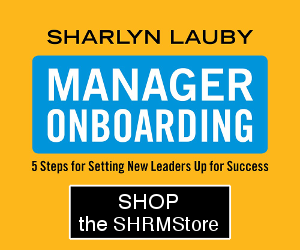
(Editor’s Note: Today’s post is brought to you by our friends at SilkRoad, a provider of strategic onboarding solutions to drive workforce readiness and organizational transformation. Check out their research, “The Value of Employee Engagement in the Age of Digital Disruption” a valuable report for any HR leader who wants to see engagement and onboarding from the C-suite. It’s a must-read for any human resources professional. Enjoy the article!)
Onboarding continues to be a strategic focus for organizations. According to Brandon Hall’s 2017 Onboarding Survey, over 70 percent of organizations in the U.S., EMEA, and APAC have placed increased emphasis on the process. And there’s good reason for it.
The same study indicated that companies with more mature onboarding programs experience 43 percent higher market penetration than those with less mature programs. Good onboarding benefits the bottom-line.
But sadly, the onboarding process isn’t keeping up with the times. In many organizations, onboarding is simply an extension of orientation. This isn’t to say that orientation is bad. To the contrary, it performs an important role. But onboarding is supposed to be different.
4 Onboarding Trends for 2019
Four trends were identified in SilkRoad’s 2018 Global Strategic Onboarding Report that organizations need to consider when it comes to onboarding new hires.
- Identify the audience. When we think onboarding, most of the time we think new hires. Time for that to change. Whenever there’s an employee status change, the organization needs to ask themselves, “Would an employee benefit from onboarding?” This includes promotions, demotions, and lateral transfers. It also includes mergers and acquisitions.
- Shift the goal. For years, the primary goal of onboarding has been job readiness. And while that’s still important, organizations are acknowledging that employee engagement might be a more strategic primary goal. Eighty percent (80%) of companies in North America indicated that engagement and retention take precedent over readiness.
- Build content to support the goal. I don’t know of a single organization that has a training program on how to conduct onboarding. We do for performance management and interviewing, but not onboarding. Maybe it’s time to start. Building out content for onboarding is ranked as the number one investment that organizations are making.
- Let content determine length. SilkRoad’s report shows the majority of onboarding programs last three months or less. Honestly, that’s simply not long enough. Before deciding how long onboarding will last, look at how much content needs to be covered. Then decide. And remember…there’s no rule that says onboarding can’t be spread out over several months.
The ideal time to have this discussion is at the beginning of the operational year or budget year. Everyone is focused on goals – including talent management goals. After the organization has considered their options, it’s time to put a plan in place.
How to Create Your Strategic Initiative
Creating a strategic onboarding plan doesn’t have to be complex or expensive. It does need to be thorough. Here are six steps to get the process started:
Add a readiness component. I’ve always said the goal of onboarding is to make employees welcome and productive. And I still believe that’s true. But as more organizations add artificial intelligence technologies, it’s time to add a third component: ready. Not just ready for the job the employee has today, but ready to take on new opportunities in the future. This might include reskilling and upskilling.
Get buy-in. No company initiative works without buy-in. It’s possible that the organization will start buying-in during the discussion about trends (above). But it might also take some extra support, especially if additional resources are necessary. Consider getting the buy-in of your “harshest critic”. If you can convince them this project is necessary, chances are you will get the support you need.
Conduct an internal assessment. Even if you already know what you have, conduct an assessment. Even if you know what you want, conduct an assessment. It doesn’t have to be a long assessment. But it should happen. Assessments confirm that our assumptions are correct. There’s nothing worse than designing a program to solve a problem only to discover that the program doesn’t solve the problem at all. Trust me, it happens a lot.
Identify opportunities. The results of the assessment should provide some targets for improvement. The key here is prioritizing opportunities. Taking onboarding from basic to strategic isn’t about going 100+ mph. It’s about adding layers that will complement each other. It’s about smart implementation. HR departments need to be careful that they don’t take on too much and end up delivering lackluster results. It doesn’t help the goal.
Build a SMART plan to address gaps. You guys know I’m a big fan of SMART (specific, measurable, actionable, responsible, time-bound). This is a perfect way to use it. Identify the first opportunity you want to work on. Decide what success will look like. Break down the individual steps it will take to accomplish the goal along with who will be responsible for each. Finally, attach a reasonable timeline to the project.
Monitor progress. Once the project is launched, it’s essential to regularly monitor status toward goals. Even though a plan has been put in place, there could be internal or external influences that necessitate making adjustments. Just keep in mind that adjustments are common and can ultimately help in creating a better program. So, plan to review progress on a pre-determined schedule. Even if you think that there’s nothing new to report.
Strategic Onboarding Creates a Competitive Advantage
The outplacement and executive coaching firm Challenger, Gray, and Christmas predicts that hiring in 2019 will be up over the past year. That means more talent acquisition challenges. And more onboarding.
If organizations want to engage and retain the employees and they’re spending huge resources to hire, they’re going to have to do something different. Part of that difference is strategic onboarding.
P.S. If you want to learn more about strategic onboarding, schedule a demo to preview SilkRoad’s strategic onboarding solution. Technology will continue to be a key consideration in the transformation from basic to strategic onboarding.
Image captured by Sharlyn Lauby at the SilkRoad Connections Conference
18







